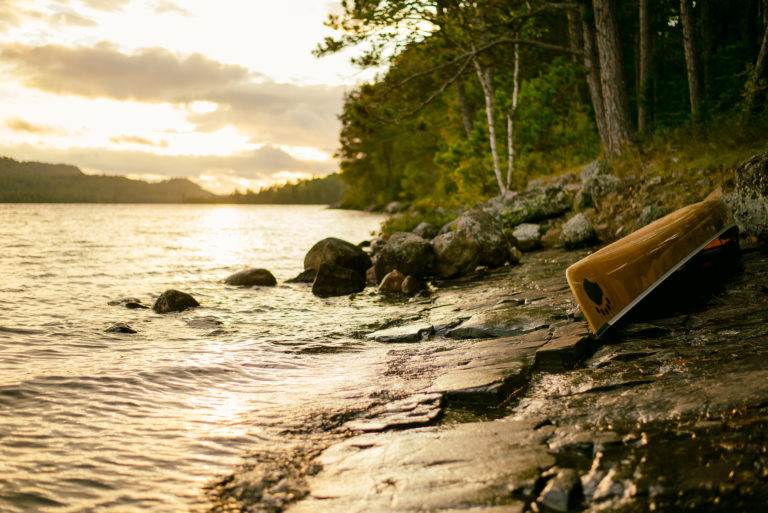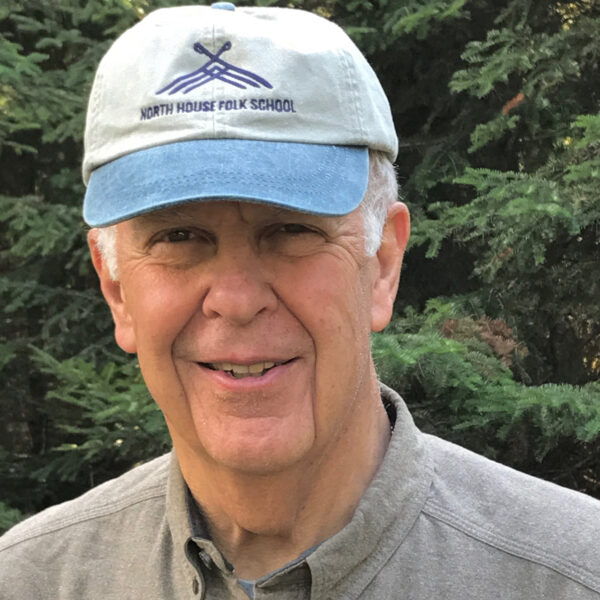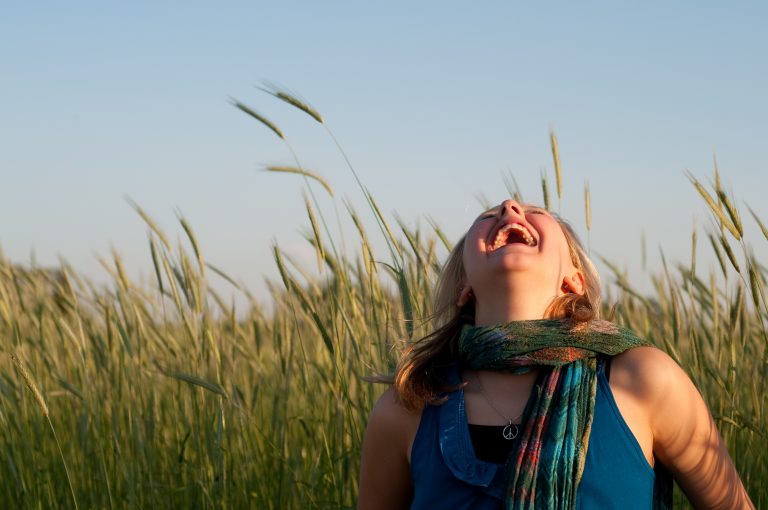
Image by Sarah McGee/Flickr (CC BY-NC 2.0)..
A Wilderness Pilgrimage: Where We Go When We Die
Let these woods have their
slow way with you. Patient
pines that hold their green
through all the frozen seasons,
lichen-covered rocks that live
indifferent to time’s passage—
these will teach you how
to bring your life to ground.The fractal chaos of the forest
floor, its white anemones,
spiked grasses and dead leaves,
the fallen trunks and branches
splayed out like pick-up sticks—
these will teach you how
to live freely, with abandon,
and feed the roots of new growth
when your time has come.
As I write, I’m in the Boundary Waters Canoe Area Wilderness (BWCAW) of northern Minnesota, a million acres of federally protected wilderness along the Canadian border. Years ago, before I had seen this place, a friend tried to describe it to me. “Everywhere you look,” he said, “there’s a perfect Japanese garden.” And so there is: rocks, trees, water, and sky in endless permutations of elegance.
It’s a flawless August evening. The heavy, moist heat of the day has given way to cool breezes that stir my mind and heart even as they ripple the lake just down the hill. A low-lying sun bathes the forest in honey. The pines and the aspens, the weed trees, bushes, and tufted grasses glow amber and green against what e.e. cummings called a “blue true dream of sky.”
I was in my mid-fifties when I first spent time in this patch of heaven. Its simplicity, beauty, and peace fed me so deeply me that I’ve returned every summer for the past 20 years. At first, vacation was all I had in mind. But I soon realized that my annual trek to the Boundary Waters was a pilgrimage to holy ground, to a place of healing.
During the workaday year, when things get tough, I make this pilgrimage in my imagination. I close my eyes and see myself hiking through the sun-dappled woods, paddling down a windswept lake, hearing the unforgettable call of the loon, watching the cosmic drama of the Northern Lights, or eavesdropping on the quiet conversation between those two old friends, the lake and the land, as the cold, clear water laps gently against the shore.
It’s not tranquility alone that makes this wilderness a place of healing for me. It’s the patient, resourceful, resilient way nature heals itself, showing me what it takes to heal my own wounds so I can be in the world as a healer. Watching wilderness overcome devastation has helped me see how suffering can serve as a seedbed for renewal. Even more, it has offered reassurance that in the great cycle of life and death, new life always gets the last word.
On July 4, 1999, a derecho — a line of fierce, fast-moving windstorms that create an inland hurricane — ripped through the Boundary Waters. It took down millions of trees, making tinder for numerous fires that were to ravage even more forest over the next few years. A month after the derecho, when I arrived for my annual retreat, the sight of that massive blowdown broke my heart. I wondered if I could stay or would want to return the next year. Something held me there and kept me coming back, giving me a chance to witness resurrection.
One of my favorite hikes passed through a section of forest so thick it felt primeval. Knowing that these cloistered woods had been hard-hit by wind and then fire, it was several years before I felt able to try that trail again. When I did, I saw how the void created by death had been filling with new life.
Raspberries and blueberries, lupine and purple asters had sprung up in abundance as sunlight fell on earth that had long been shrouded in shadow. Aspens grew from seedlings at the speed of a hungry teenager. Today, 16 years after the derecho, most of those seedlings are twice my height. And the massive rocks this trail traverses now look here and there like raku pottery, fired in the kiln of a fierce-burning forest, glazed in metallic shimmers of red and brown, blue and gold.
For years, I’ve asked myself the ancient question, “How, then, shall we live?” I’ve often found good guidance on the time-honored paths of the world’s great wisdom traditions. But at age 76, as I also ask, “How, then, shall we die?”, no path serves me better than those I’ve tracked through the Boundary Waters, my window into heaven.
Theologies that portray heaven as a gated community in the sky don’t speak to my condition. Among other things, an eternity spent exclusively among members of my own tribe sounds more hellish than heavenly. Nor am I persuaded by claims that, when we die, spirit separates from matter and takes on some sort of disembodied, wraith-like life. As far as I can tell, matter and spirit are intertwined and indivisible, a distinction without a difference, two sides of one coin. If flesh and earth were not infused with spirit, how could we and the natural world be so full of beauty, healing, and grace?

I learned long ago how much I do not know, so I will not be surprised if death has surprises in store for me! But amid all my not-knowing, I’m certain of two things. When we die, our bodies return to the earth, and earth knows how to turn death into new life. When my own small life ends in some version of wind and fire, my body will be transformed by the same alchemy that keeps making all things new, witness this wilderness. As the medieval alchemists dreamed, dross will be turned into gold.
It matters not to me whether I am resurrected in a loon calling on the lake, a sun-glazed pine, a wildflower on the forest floor, the stuff that fertilizes those trees and flowers, or the Northern Lights and the stars that lie beyond them. It’s all good and it’s all gold, a vast web of life in which body and spirit are one.
I won’t be glad to say goodbye to life, to challenges that help me grow, to gifts freely given, to everyone and everything I love. I will be glad to play a bit part in making new life possible for others. That’s a prospect that makes life worth dying for.
Twenty annual pilgrimages to this holy place called the Boundary Waters have convinced me that Julian of Norwich got it right: “All shall be well, and all shall be well, and all manner of thing shall be well.”
Author’s Note: In “How to Be a Poet,” Wendell Berry writes, “There are no unsacred places; / there are only sacred places / and desecrated places.” When I think about wilderness as a holy place, I’m painfully aware of the many natural sanctuaries we’ve desecrated, whether or not they are protected by law. At this very moment, the Boundary Waters Canoe Area is threatened by mining proposals from companies with ruinous environmental track records. For further information and action opportunities see Friends of the Boundary Waters Wilderness.

